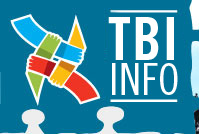What are the needs of family members?
The needs of loved ones can be broken down into three categories: a need for information, a need for support and a need for care and services.
Studies have shown that the needs of loved ones are the same after rehabilitation. They can be met by the natural network (family, friends, relatives, and colleagues) and by the professional network (caregivers).
Need for information. There is a need for information on:
• The brain-injured person’s illness
• The person’s present condition, progress and prognosis (despite the uncertainties)
• Potential short- and long-term consequences of a TBI
• The care provided
• The role of each professional on the care team
• How the care facility operates
• The rehabilitation process
• The public and community resources available to loved ones
• Typical reactions of loved ones in this type of situation (impacts on loved ones and coping strategies)
• Public and community services available after rehabilitation
• Access to available resources
• The lack of awareness among the general public of the problems faced and the short- and long-term impacts they can have on them
• The risks of burn-out for loved ones
• Their rights and needs
• The rights and needs of the brain-injured person
• Resources available to provide emotional support
Support needs
• Individual, family, spouse and group psychological support
• Reducing fatigue and risk of burn-out
• Reducing guilt
• Being listened to when in times of pain
• Being involved in the rehabilitation process
• Establishing good communication with the care team
• Being encouraged and valued as a family caregiver
• Having access to professional help when making decisions about the brain-injured person
• Clarifying the expectations of each party – of themselves and of others
• Clarifying the expectations of the brain-injured person
• Identifying one’s motivations in helping to the brain-injured person
• Developing one’s ability to cope (flexibility, realistic expectations about the new situation)
• Recognizing and accepting one’s own limitations and the limitations of the brain-injured person
• Re-examining the roles of each family member in terms of the current situation
• Rebuilding one’s identity in light of the current situation, taking into account the uncertainties and one’s grief
• Rebuilding satisfying family relationships for all concerned
• Maximizing the brain-injured person’s well-being, meeting their needs and respecting their rights
Care and service needs
• Identifying and using available resources to meet the need for emotional support
• Identifying and using relief resources
• Identifying and using resources capable of meeting basic needs (house cleaning, meals on wheels, etc.)
• Identifying and using available resources to meet financial needs
• Identifying and using resources to assist in completing different administrative procedures
• Taking a break, organizing activities outside the home
• Develop an appropriate social support network
Terms of Use | 2007-2008 All rights reserved © INFO-TBI. Graphic design : François Ménard | Design : WebConforme

